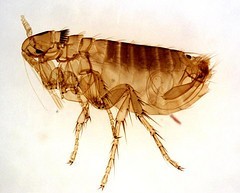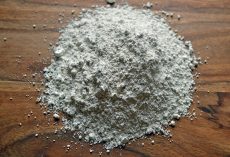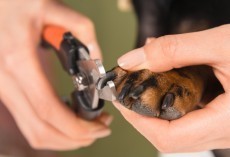A lot of people are reluctant to use chemical flea treatments because of the possibility of a toxic reaction with their skin. “If it isn't safe for my children, how can it be safe for my pet?” they ask. Unless it is a full blown flea infestation, you may have good results by using gentler and safer methods for flea eradication and control.
Let’s start with water…yes, that basic wet stuff. A wet dog has wet hair, and believe it or not, adult fleas cannot hang on to wet hair. They slide off. So, give your dog a bath and let it stay wet for a time. A good dip in a tub of water will wash away most, if not all of the fleas on your pet. Using a gentle shampoo, or a little bit of dish liquid, perhaps one with a citrus base (fleas are repelled by lemon and orange), along with thorough and regular brushing, will go a long way towards ridding your pet's body of fleas.
Granted, that is a temporary solution. At the other end of the spectrum, you can head on over to your local garden shop and stock up on nematodes. Those are little worms that thrive on flea eggs. Note: these are not the harmful nematodes that cause heartworm. Big difference.
In between the broad spectrum of harsh chemicals and au naturel are loads of simple natural remedies. Pet MD lists some very interesting natural solutions, such as:
1. Juice
Fleas are known to be repelled by citrus. A freshly squeezed orange or lemon can be rubbed onto your pet's fur, with no harm to your pet if it is licked off, and fresh smelling fur to boot.
2. A Clean Home
Around the house, vacuuming, laundering, and disinfecting the floors and your pet's living spaces will help to control the population of fleas (do not use products with volatile organic compounds). In the yard, you might consider adding a natural predator of fleas. Nematodes are small worms that feed off of flea larva, and are easy to find at garden stores or pet shops.
3. Blades of Fury
Ticks hang out in tall grass and use the opportunity to grab on to passersby when they feel body warmth. If you are going to be spending time in wooded or grassy areas with your dog, you might want to fashion some cover-up clothing for your dog to avoid ticks. An old t-shirt can be altered to fit your dog's body, and old socks can be cut to make “leg warmers.” This may not entirely prevent ticks from making their way onto your dog, but it keep most of them off since they have nothing to latch onto.
4. Essential Oils
Because ticks carry dangerous bacteria, repelling them is a priority. One of the natural repellents that a lot of people have success with is rose geranium oil, which can be applied to your dog's collar.
A NOTE on OILS: Do NOT use these on your cat. They can have a bad reaction to essential oils. With ticks, the best thing you might do it to check your pet a few times a day when you are in an area that has ticks, and remove them promptly. Proper technique is important for removing ticks and fleas, so make sure that you consult a veterinarian before doing it yourself.
Want to learn more and get other techniques? Head over the PetMD for more info.
Now you have a few new and natural ways to combat fleas and ticks. You can feel confident that your pets (and home) are bug-free for a time — especially in the summer months when there are plenty of nasty parasites roaming about.









